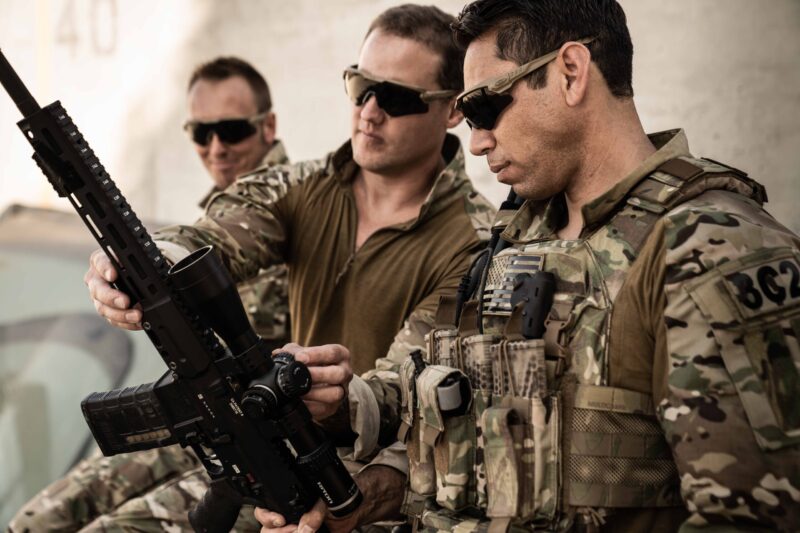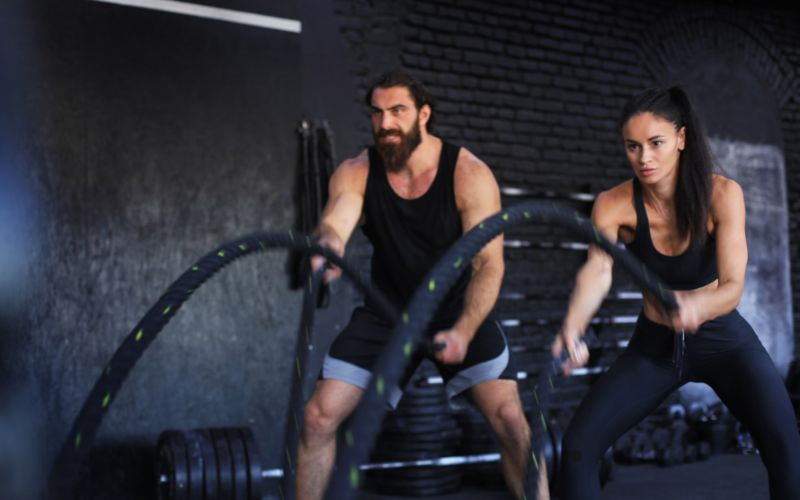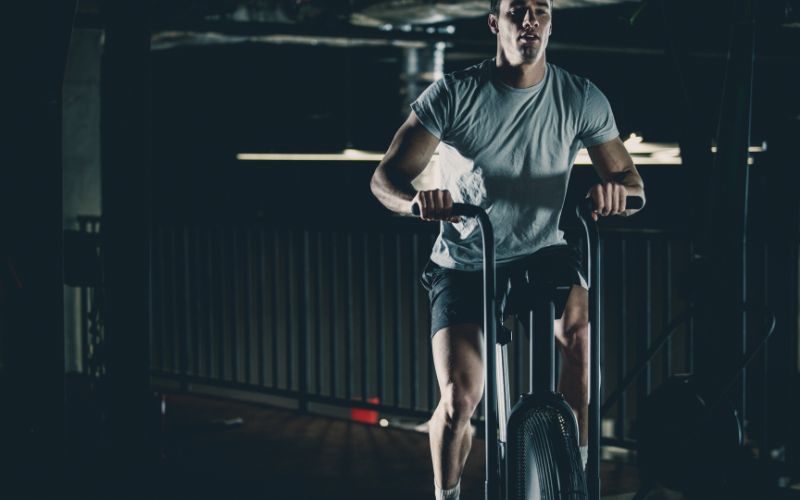Importance of Physical Fitness for Law Enforcement Officers

Law enforcement is among the most physically, mentally, and emotionally demanding jobs on earth. Officers encounter unpredictable scenarios every day, whether it’s a high-speed chase, a foot pursuit, or physically subduing a suspect. To keep pace with these situations, staying at peak physical fitness isn’t a choice; it’s a matter of professional survival.
However, in the haste of paperwork, shift work, and stress, physical fitness is often relegated to the back burner. This omission has serious effects. It impacts not only the officer but also public safety, community trust, and the overall effectiveness of entire agencies.
What Is Physical Fitness in Law Enforcement?

Police fitness encompasses more than just lifting heavy weights or sprinting. It’s a comprehensive concept that encompasses cardiovascular endurance, muscular strength, flexibility, agility, and mental acuity. Officers frequently require a combination of speed, power, coordination, and endurance in real-world situations, and therefore, generic fitness tactical training for law enforcement is insufficient for their purposes. Targeted training regimens specifically addressed to the requirements of police duties are necessary for maximum performance.
Additionally, fitness here extends beyond the physical; it encompasses mental stress management, resilience, and remaining calm under pressure. Fitness enables officers to perform not only in crises but also in their routine interactions with the public.
Why Officers Fail To Stay Fit?
Even with awareness of its importance, officers find it challenging to stay fit because:
- Irregular shifts and overtime cause time constraints
- The lack of motivation after years on the force.”
- Injuries or medical restrictions
- Limited availability of training facilities
Importance of Physical Fitness in Police Work

Physical fitness is not merely a matter of appearance or completing a fitness test; it’s about health. In police work, it is directly connected to the effectiveness and safety of an officer in performing their job. Below, we outline the key reasons why physical fitness is a crucial aspect of police careers.
1. Improved Job Performance
Perhaps the most self-evident advantage of physical fitness in policing is enhanced on-the-job performance. Officers often find themselves in physically demanding situations, including chasing suspects, lifting heavy objects, or navigating obstacles. A physically fit police officer can react more quickly, endure longer in high-stress encounters, and perform tasks with greater ease.
Being fit also increases reaction time and the ability to make quick decisions during life-threatening situations. Whether de-escalating or applying force properly, fitness can be the dividing line between a resolved incident and an escalating threat.
2. Injury Prevention

Officers often encounter physical altercations, repetitive motions, and potentially hazardous environments. In the absence of fitness, they’re more likely to suffer from musculoskeletal injuries, particularly in the lower back, knees, and shoulders.
A conditioned body with healthy muscles, joints, and ligaments is more resistant. Regular strength training and mobility exercises can significantly reduce the risk of strains, sprains, and overuse injuries.
3. Reducing Stress and Improving Mental Health
Law enforcement personnel are subjected to higher-than-usual levels of stress, anxiety, and burnout. Regular exercise is a well-documented way to reduce stress, boost mood, and enhance mental acuity.
Exercise triggers the release of endorphins, natural mood elevators, that fight depression and anxiety. It also enhances sleep, which is essential for recuperation, emotional control, and mental sharpness in the field.
4. Enhanced Tactical Readiness
Police operations also demand rapid decision-making in fluid environments. Physical fitness adds to tactical preparedness through improvements in cognitive processing, including concentration, recall, and response time. Simulation training that approximates actual conditions also trains the body and brain to work together effectively in stressful situations.
Tactical athletes—well-trained officers—perform better, respond more quickly, and maintain situational awareness even in stressful situations.
5. Enhanced Longevity and Career Viability
Poor fitness can diminish an officer’s career. Chronic conditions such as hypertension, obesity, and heart disease are common among law enforcement officers who overlook physical fitness. The problems not only impact work performance but also shorten the duration of service and accelerate retirement due to disability.
Maintaining an active lifestyle during the working years can help prevent these conditions from developing, enabling officers to work longer and retire in good health.
6. Public Confidence and Professional Image
A fit officer conveys confidence, discipline, and professionalism. This is important not only within the department but also in public encounters. Public confidence is often based on impressions, and an officer who appears fit and professional creates a greater sense of security and command.
In addition, officers who are disciplined in fitness tend to bring the same discipline to other aspects of their working life.
7. Improved Team Dynamics and Operational Effectiveness
Fitness not only enhances individual performance but also enhances team performance. A unit of fit police officers will function more efficiently in coordinated operations, such as crowd control, tactical entry, or search and rescue. Each officer is a trusted asset, mitigating risk and raising mission success rates.
Police departments that emphasize physical training create a culture of readiness, professionalism, and toughness, which enhances overall morale and esprit de corps.
Creating a Culture of Fitness within Police Departments
To leave a lasting legacy, fitness has to be embraced not only on an individual basis but also organizationally. Departments must incorporate fitness routines into daily life, not only at the academy but throughout an officer’s career. Here are some practical steps:
- Regular annual fitness tests promote regular training.
- Fitness centers, on-site or fitness stipend, to lower barriers to access.
- Maintaining nutrition, sleep, and mental well-being programs, incorporating wellness education.
- Peer fitness leadership positions in the bureaus to encourage colleagues.
Conclusion
Physical fitness isn’t a luxury; it’s a professional duty in the law enforcement profession. A healthy officer is a better guardian, a more effective decision-maker, and a more powerful community leader. Through investment in their physical health, officers enhance both their own well-being and career sustainability while upholding the integrity and effectiveness of the law enforcement profession.
Departments and individuals alike need to recognize that physical fitness is as important as tactical training, firearms training, or knowledge of the law. It’s time to take it as seriously and do something about it.
Frequently Asked Questions
How frequently should law enforcement officers physically train?
Ideally, officers should exercise physically 4–5 times a week, incorporating a variety of cardio, strength, flexibility, and recovery exercises to address all aspects of physical fitness relevant to their job.
What exercises are best suited for police officers?
Functional fitness workouts that incorporate bodyweight exercises, resistance training, sprint interval training, and agility drills are most effective. These simulate actual physical demands officers face on the job.
Can exercise enhance decision-making under stressful situations?
Yes. Regular physical activity enhances blood flow to the brain, improves cognitive function, and regulates stress hormones, resulting in quicker, clearer, and more logical decision-making in stressful situations.
